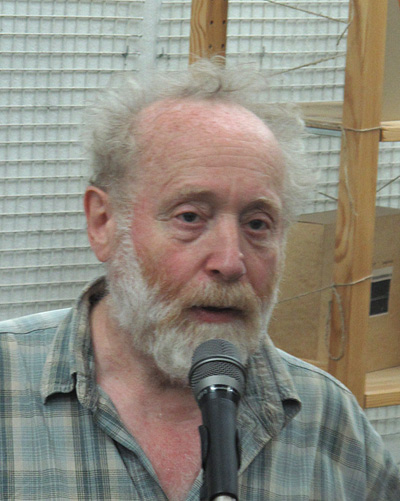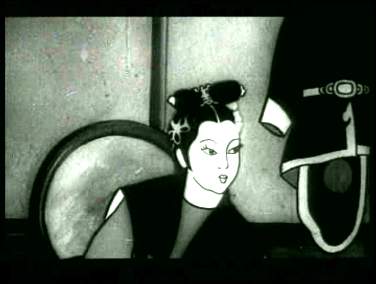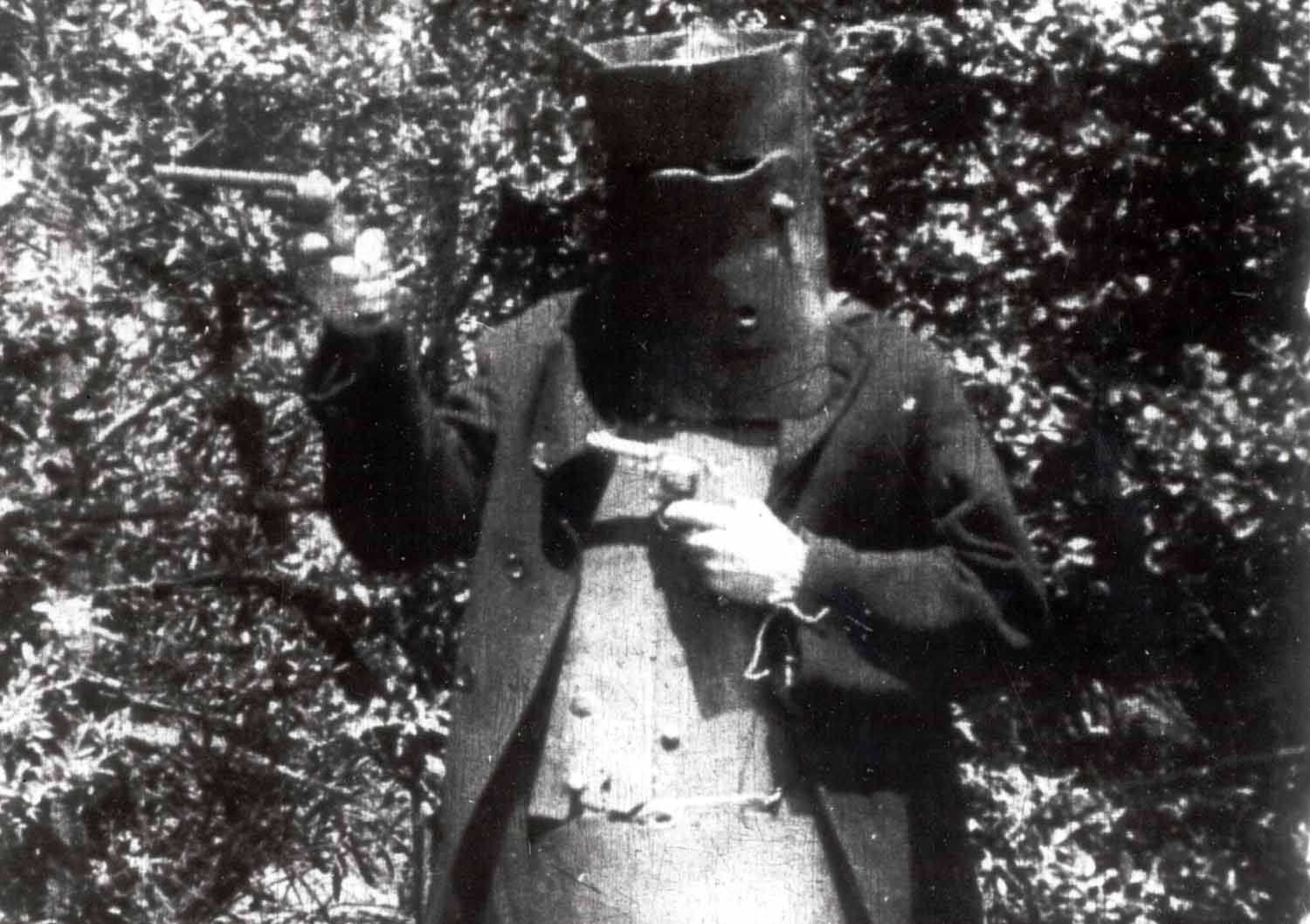|
Soyuzmultfilm
Soyuzmultfilm ( rus, Союзмультфи́льм, p=səˌjʉsmʊlʲtˈfʲilʲm , ''Unioncartoon'') (also known as SMF Animation Studio in English, formerly known as Soyuzdetmultfilm, ''Unionchildcartoon'') is a Russian animation studio, production, and distribution company based in Moscow. Launched on June 10, 1936 as the animated film production unit of the U.S.S.R.'s motion picture monopoly, GUKF, Soyuzmultfilm has produced more than 1,500 cartoons. Soyuzmultfilm specializes in the creation of animated TV series, feature films and short films. The studio has made animated films in a wide variety of genres and art techniques, including stop motion, hand-drawn, 2D and 3D techniques. The "Golden Collection" of Soyuzmultfilm, produced from the beginning of the 1950s and to the end of the 1980s, is considered to be the classics of the animation medium and the best works of world-renowned directors, production designers and animators. Among the studio's best-known films are ' ... [...More Info...] [...Related Items...] OR: [Wikipedia] [Google] [Baidu] |
Hoffmaniada
''Hoffmaniada'' () is a 2018 Russian stop motion-animated feature film from Soyuzmultfilm. The film is one of the first full-length puppet animated film in the recent history of the animation studio. The concept and the art design was done by Mikhail Shemyakin and is edited by Stanislav Sokolov and Veronika Pavlovskaya, written by Sokolov and Viktor Slavkin, and directed by Sokolov. The screenplay incorporates story lines and characters from the work of E. T. A. Hoffmann (''Little Zaches Called Cinnabar'', ''The Golden Pot'' and ''The Sandman (short story), The Sandman''), with the main character being Hoffmann himself. In particular, it focuses on the duality between the imaginative universe of his writings and his real-life profession as a government clerk (based on his letters and journals). The film stars the voices of , Slava Polunin, , , Anna Artamonova, Aleksei Petrenko, Aleksey Petrenko, , and Aleksandr Shirvindt. The first twenty minutes of the film were screened on 20 Nov ... [...More Info...] [...Related Items...] OR: [Wikipedia] [Google] [Baidu] |
Well, Just You Wait!
''Well, Just You Wait!'' (, ), also known as I'll get you! in official translations, is a Soviet and Russian series of animated short films produced by Soyuzmultfilm. In the 2014 all-Russian poll, ''Well, Just You Wait!'' won by a wide margin as people's favourite cartoon/animated series of all time. The series follows the comical adventures of Wolf (), trying to catch – and presumably eat – Hare (). It features additional characters that usually either help the hare or interfere with the Wolf's plans. The original film language is Russian, but very little speech is used, usually interjections or at most several sentences per episode. The series' most common line is the eponymous ''"Nu, pogodi!"'', yelled by the wolf when his plans fail. It also includes many grunts, laughs, and songs. Characters The Hare The Hare, commonly transliterated into English as Zayats (), is portrayed as a supposedly positive hero. He is less developed than the Wolf, and most of his actions a ... [...More Info...] [...Related Items...] OR: [Wikipedia] [Google] [Baidu] |
Hedgehog In The Fog
''Hedgehog in the Fog'' ( rus, Ёжик в тумане, r=Yózhik v tumáne, p=ˈjɵʐɨk f tʊˈmanʲɪ) is a 1975 in film, 1975 Soviet Union, Soviet animated film directed by Yuri Norstein and produced by the Soyuzmultfilm studio in Moscow. The Russian script was written by Sergei Grigoryevich Kozlov, who also published a book under the same name. In 2006, Norstein published a book titled ''Hedgehog in the Fog'', listing himself as an author alongside Kozlov. Plot The Hedgehog (voiced by Maria Vinogradova) goes to visit his friend the Bear Cub to drink tea with raspberry jam and count the stars. The road along which the Hedgehog moves passes through deserted fields and forest thickets. The Hedgehog spots an impressive white horse in the evening fog and approaches. Within the fog, the world is mysterious and outlandish images appear before the Hedgehog. Among them is an Eurasian eagle-owl, eagle-owl looking into a well, a snail suddenly turning into an elephant and a bat wi ... [...More Info...] [...Related Items...] OR: [Wikipedia] [Google] [Baidu] |
Yuliana Slashcheva
Yuliana Yuryevna Slashcheva (Russian: Юлиа́на Ю́рьевна Слащёва; born 9 September 1974) is a media manager, a communications expert, Chairman of the Board at SMF Studio/Soyuzmultfilm (since 2017), Russia's oldest animation studio based in Moscow, Chairman of the Board for the Association of Animation film industry and CEO of the Gorky Film Studio (since 2019). Since November 14, 2018, she has been a member of the Board of the Federal Fund for Social and Economic Support of Russian Cinematography, as well as a member of the Board of Directors of Roskino. Prior to joining SMF Studio/Soyuzmultfilm she was the Chief Executive Officer of Russia's leading content holding CTC Media (2013—2016). Earlier she was the President and Chief Executive of Russia's largest strategic communications agency, Mikhailov & Partners, where she was responsible for the planning and delivery of major Russian and international projects. In November 2023, she joined the Russian part of t ... [...More Info...] [...Related Items...] OR: [Wikipedia] [Google] [Baidu] |
Cheburashka
Cheburashka ( rus, Чебурашка, a=ru-Cheburashka.ogg, p=t͡ɕɪbʊˈraʂkə), also known as ''Topple'' in earlier English translations, is a fictional character created by Soviet writer Eduard Uspensky in his 1965 children's book ''Gena the Crocodile and His Friends''. The character subsequently appeared as the protagonist in a series of stop-motion animated films directed by Roman Kachanov for Soyuzmultfilm, the first of which was made in 1969, with songs composed by Vladimir Shainsky. Even today Cheburashka is still renowned in the former Soviet Union, and has been called the "Soviet Mickey Mouse" by external observers. Although only four short animated films have been produced featuring Cheburashka, he is still a national symbol in the former USSR and Russia, and is famous outside of it. One reason for his popularity is the message of his stories, which stress that one's origin is not as important as one's kindness. History Cheburashka is an iconic Russian cartoo ... [...More Info...] [...Related Items...] OR: [Wikipedia] [Google] [Baidu] |
Three From Prostokvashino
''Three from Prostokvashino'' () is a 1978 Soviet animated film based on the 1974 children's book '' Uncle Fedya, His Dog, and His Cat'' by Eduard Uspensky. The main character is a six-year-old boy who is called "Uncle Fyodor" (voiced by Maria Vinogradova) because he is very serious. After his parents refuse to let him keep the talking cat (voiced by Oleg Tabakov), Uncle Fyodor leaves home. With the dog Sharik (voiced by Lev Durov), the three set up a home in the country village Prostokvashino ( rus, Простоквашино, p=prəstɐˈkvaʂɨnə, Простокваша = "soured milk"). There they have many adventures, some involving the local mailman, Pechkin (voiced by Boris Novikov). The series has generated many quotable phrases in post-Soviet countries. It has made an impact comparable to that of ''Well, Just You Wait!'' (1969-2017) in Russian culture. Plot Uncle Fyodor is a very independent city boy, "a boy on his own". After his mother forbids him from keeping his ta ... [...More Info...] [...Related Items...] OR: [Wikipedia] [Google] [Baidu] |
Animation
Animation is a filmmaking technique whereby still images are manipulated to create moving images. In traditional animation, images are drawn or painted by hand on transparent celluloid sheets to be photographed and exhibited on film. Animation has been recognised as an artistic medium, specifically within the entertainment industry. Many animations are either traditional animations or computer animations made with computer-generated imagery (CGI). Stop motion animation, in particular claymation, has continued to exist alongside these other forms. Animation is contrasted with live action, although the two do not exist in isolation. Many moviemakers have produced films that are a hybrid of the two. As CGI increasingly approximates photographic imagery, filmmakers can easily composite 3D animations into their film rather than using practical effects for showy visual effects (VFX). General overview Computer animation can be very detailed 3D animation, while 2D c ... [...More Info...] [...Related Items...] OR: [Wikipedia] [Google] [Baidu] |
Karlsson-on-the-Roof
Karlsson-on-the-Roof () is a character who features in a series of children's books by the Swedish author Astrid Lindgren. Lindgren may have borrowed the idea for the series from a similar story about Mr. O'Malley in the comic strip '' Barnaby'' (1942) by Crockett Johnson. Plot ''Karlsson'' is a very short, plump, and overconfident man who lives in a small house hidden behind a chimney on the roof of "a very ordinary apartment building on a very ordinary street" in Vasastan, Stockholm. When Karlsson pushes a button on his stomach, it starts a clever little engine with a propeller on his back, allowing him to fly. In his own opinion, Karlsson is the best at everything. He befriends Svante Svantesson, a seven-year-old boy and youngest member of the Svantesson family, who is often referred to as "Little Brother", . Karlsson is quite mischievous and likes to make fun and prank others. He often gets Lillebror into trouble, as Karlsson usually disappears just before Lillebror's fami ... [...More Info...] [...Related Items...] OR: [Wikipedia] [Google] [Baidu] |
Animation
Animation is a filmmaking technique whereby still images are manipulated to create moving images. In traditional animation, images are drawn or painted by hand on transparent celluloid sheets to be photographed and exhibited on film. Animation has been recognised as an artistic medium, specifically within the entertainment industry. Many animations are either traditional animations or computer animations made with computer-generated imagery (CGI). Stop motion animation, in particular claymation, has continued to exist alongside these other forms. Animation is contrasted with live action, although the two do not exist in isolation. Many moviemakers have produced films that are a hybrid of the two. As CGI increasingly approximates photographic imagery, filmmakers can easily composite 3D animations into their film rather than using practical effects for showy visual effects (VFX). General overview Computer animation can be very detailed 3D animation, while 2D c ... [...More Info...] [...Related Items...] OR: [Wikipedia] [Google] [Baidu] |
History Of Animation
Animation, the method for creating moving pictures from still images, has an early history and a modern history that began with the advent of celluloid film in 1888. Between 1895 and 1920, during the rise of the cinematic industry, several different animation techniques were developed or re-invented, including stop-motion with objects, puppets, clay or cutouts, and drawn or painted animation. Hand-drawn animation, which mostly consisted of a succession of still images painted on cels, was the dominant technique of the 20th century and became known as traditional animation. Today, computer animation is the dominant animation technique in most regions, although traditional animation, like Japanese anime and European hand-drawn productions, remains popular outside of the US. Computer animation is mostly associated with a three-dimensional appearance with detailed shading, although many different animation styles have been generated or simulated with computers. Some productions may ... [...More Info...] [...Related Items...] OR: [Wikipedia] [Google] [Baidu] |
Joint-stock Company
A joint-stock company (JSC) is a business entity in which shares of the company's stock can be bought and sold by shareholders. Each shareholder owns company stock in proportion, evidenced by their shares (certificates of ownership). Shareholders are able to transfer their shares to others without any effects to the continued existence of the company. In modern-day corporate law, the existence of a joint-stock company is often synonymous with incorporation (possession of legal personality separate from shareholders) and limited liability (shareholders are liable for the company's debts only to the value of the money they have invested in the company). Therefore, joint-stock companies are commonly known as corporations or limited companies. Some jurisdictions still provide the possibility of registering joint-stock companies without limited liability. In the United Kingdom and in other countries that have adopted its model of company law, they are known as unlimited ... [...More Info...] [...Related Items...] OR: [Wikipedia] [Google] [Baidu] |
Feature Film
A feature film or feature-length film (often abbreviated to feature), also called a theatrical film, is a film (Film, motion picture, "movie" or simply “picture”) with a running time long enough to be considered the principal or sole presentation in a commercial entertainment theatrical program. The term ''feature film'' originally referred to the main, full-length film in a cinema program that included a short film and often a newsreel. Matinee programs, especially in the United States and Canada, in general, also included cartoons, at least one weekly serial film, serial and, typically, a second feature-length film on weekends. The first narrative feature film was the 70-minute ''The Story of the Kelly Gang'' (1906). Other early feature films include ''Les Misérables (1909 film), Les Misérables'' (1909), ''L'Inferno'', ''Defence of Sevastopol, The Adventures of Pinocchio (1911 film), The Adventures of Pinocchio'' (1911), ''Oliver Twist (1912 American film), Oliver Twist'' ... [...More Info...] [...Related Items...] OR: [Wikipedia] [Google] [Baidu] |







